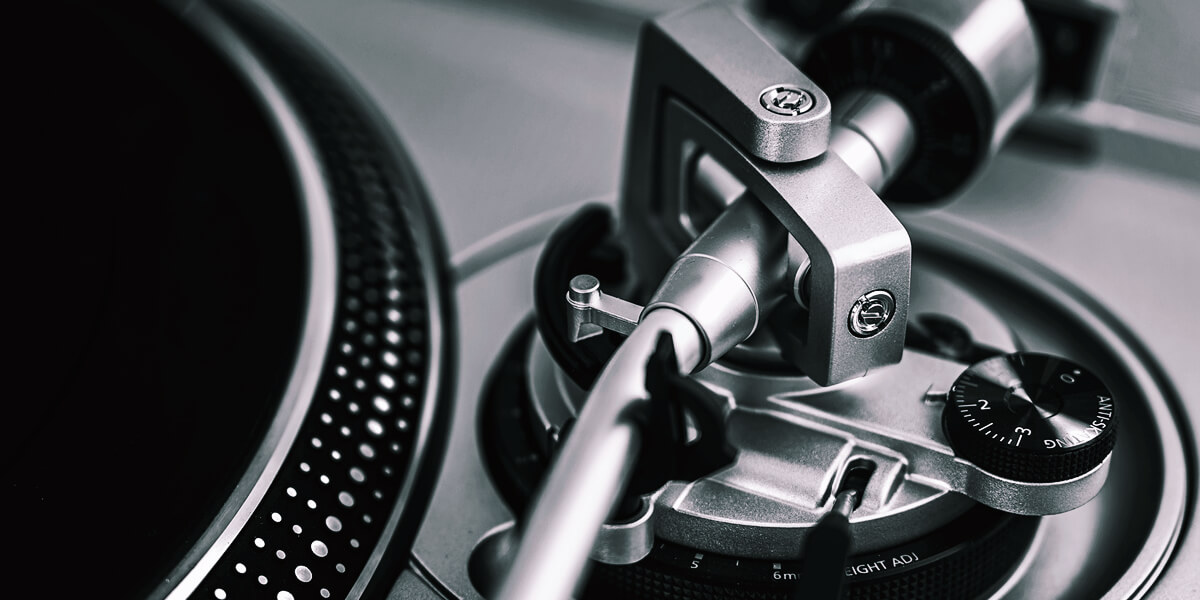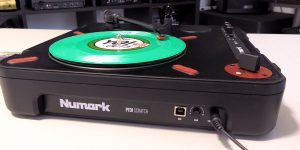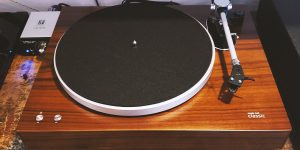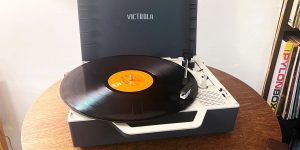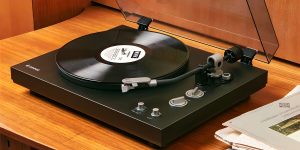There’s nothing quite like the immersive experience of listening to your favorite records. But have you ever encountered a pesky issue where the stylus seems to be constantly pulled toward the center of the record or drifts outward while playing? This phenomenon, known as skating, can negatively impact the sound quality and even damage your precious vinyl collection. To help you get the most out of your listening sessions, I will introduce you to the concept of turntable anti-skating, explain its importance, and guide you on adjusting it.
Understanding turntable anti-skating
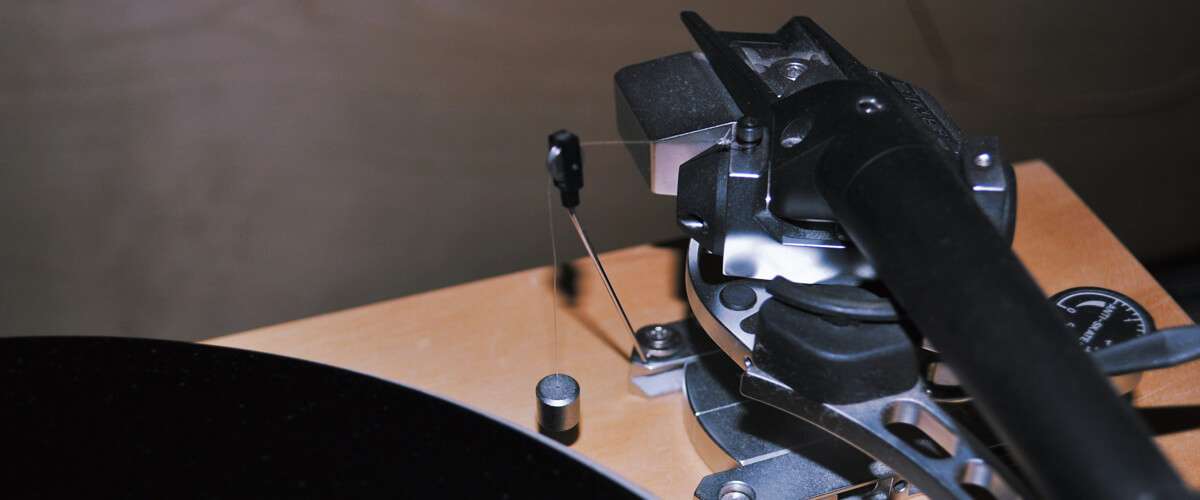
What causes skating and how it affects sound quality
Skating is when the needle, or stylus on your turntable, doesn’t stay centered in the grooves of the spinning vinyl record. Instead, it tends to move either toward the center or the edge of the record. This movement happens because of the forces acting on the stylus while the record is playing.
Skating can lead to a few issues that may not only ruin your listening experience but will also damage your vinyl collection. First, it leads to compromised sound quality, evident in issues like distortion and channel imbalance. These problems can detract from the intended audio experience and prevent the accurate reproduction of the original recording. Furthermore, skating contributes to accelerated wear and tear on both the stylus and your treasured vinyl records, shortening their lifespan and potentially causing irreversible damage over time.
How anti-skating works to counteract skating
To counteract skating, turntables have a feature called anti-skating. It helps balance the forces acting on the needle, or stylus, keeping it centered in the record’s grooves.
Anti-skating comes in different designs, like springs, magnets, or weights, but they all serve the same purpose. With the needle properly centered, you’ll enjoy a well-balanced stereo image with minimal distortion. By minimizing uneven pressure and wear, you prolong the life of your stylus and records, preserving your collection and investment.
Check and adjust the turntable’s anti-skating settings

Before starting the process of checking and adjusting your record player anti-skate settings, gather a few tools that will help you make accurate adjustments. These tools include a test record, which is a special vinyl record with specific test tracks designed for evaluating your turntable’s performance. You’ll also need a tracking force gauge to measure the force applied by the stylus on the record groove and a turntable level to ensure your turntable is perfectly horizontal.
A magnifying glass will come in handy for closely inspecting the stylus’s position in the record groove. Additionally, you’ll need an anti-skating adjustment tool, which might be a small screwdriver, a dial, or another device specific to your turntable’s anti-skating mechanism. Lastly, a tracking angle gauge is useful for verifying the alignment of your cartridge and tonearm. Which, as you may know, is important for the overall performance of your turntable, including anti-skating.
Step-by-step instructions to check and adjust your turntable’s anti-skating settings
Now that you know what tools to have at hand, let me walk you through the process of checking and setting up a turntable anti-skating control feature.
- Place the turntable level on the platter and adjust the turntable’s feet or support surface until it is perfectly horizontal. A leveled turntable is a must for accurate anti-skating adjustments.
- Consult your cartridge manufacturer’s recommendations and use the tracking force gauge to set the appropriate tracking force for your stylus.
- Put the test record on the turntable and play the anti-skating test track, which typically features a continuous, unmodulated groove. Carefully observe the stylus using the magnifying glass to see if it remains centered in the groove.
- If the stylus stays centered in the groove without drifting toward the center or the edge of the record, your anti-skating is likely set correctly. However, if the stylus drifts, it’s time to adjust the anti-skating.
- Using the anti-skating adjustment tool specific to your turntable, gently increase or decrease the anti-skating force. The goal is to achieve a balanced force that keeps the stylus centered in the groove.
- Recheck the anti-skating. Play the test record again and observe the stylus’s position in the groove using the magnifying glass. Repeat steps 5 and 6 until the stylus remains centered during playback.
- Use the tracking angle gauge to ensure your cartridge and tonearm are properly aligned. This will help optimize the overall performance of your turntable, including anti-skating.
These steps have been proven by the time and years of my work with various models of turntables.
Common turntable anti-skating issues and troubleshooting
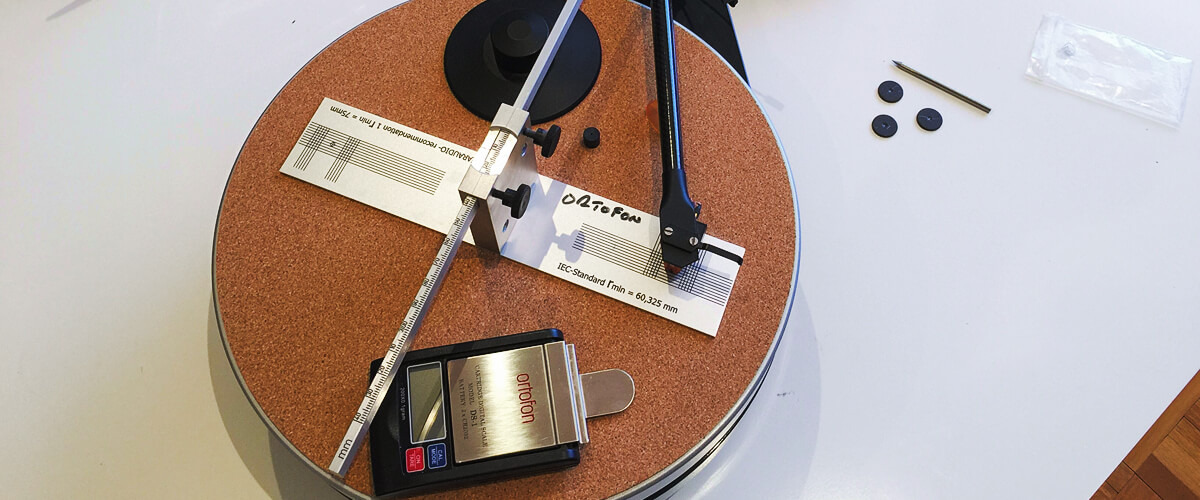
Inconsistent anti-skating performance
One of the common issues you may encounter is inconsistent anti-skating performance, where the stylus seems to stay centered in the groove during certain parts of the record but not in others. This could lead to channel imbalance and distortion during specific sections of the record.
To do away with this issue, here is what I recommend you do. First, make sure your turntable is leveled and the tracking force is set according to the cartridge manufacturer’s recommendations. If the issue persists, clean your stylus and records, as dirt or debris can cause inconsistent tracking. Additionally, inspect your records for any visible warps. They can also impact the stylus’s ability to maintain consistent contact with the groove.
Excessive anti-skating force
You may also face an issue of excessive anti-skating force, which pushes the stylus outward during playback. This excessive force can lead to channel imbalance, distortion, and even damage to the outer groove walls of your records.
To address this problem, check the anti-skating setting on your turntable and adjust it as per the manufacturer’s guidelines. If the problem continues, ensure that your tonearm’s bearings are functioning smoothly and are free from dirt or debris that could hinder their movement.
Insufficient anti-skating force
When the stylus tends to drift inward toward the center of the record, it means that its anti-skating force is insufficient. As a result, this may introduce channel imbalance, distortion, and wear on the inner groove walls of your records.
To fix this, adjust the anti-skating setting on your turntable according to the manufacturer’s guidelines. If the issue persists, inspect the tonearm’s bearings, ensuring they are functioning smoothly and free from dirt or debris. This should help you stop your record player from skating.
Damaged or worn stylus
A damaged or worn stylus can also give rise to various anti-skating issues, as it may struggle to track the record groove accurately.
Use a magnifying glass to examine your stylus for any visible signs of wear or damage. If you find any issues, it’s time to replace the stylus. Additionally, remember to clean your stylus regularly to remove any dirt or debris that could affect its performance. Proper maintenance and anti-skate calibration will ensure optimal performance and an enjoyable listening experience.

